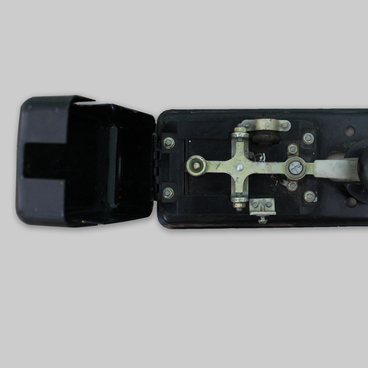This type of flashlight was invented by the Swedish scientist Nils Gustaf Dalen-winner of the 1912 Nobel Prize in Physics for his ‘invention of automatic regulators for use in conjunction with gas accumulators for illuminating lighthouses and buoys’. Dalen received his master’s and doctorate degrees from Chalmer University of technology (Gothenburg, Sweden).
Dalen’s most famous invention was the sun valve, which ‘turned off’ the lighthouse when exposed to sunlight. In 1912, as a result of a gas explosion, Dalen became blind. In the same year, he was awarded the Nobel prize in physics. This sparked rumors that the award was partly conferred out of compassion. Despite his blindness, Dalen remained the head of the company he founded, AGA, which specialized in the production of gas accumulators, until 1937.
Although the awarding of the Nobel Prize to Dalen was sometimes questioned, in reality it was consistent with the general conditions of Alfred Nobel’s will. Dalen conducted research on the chemistry of acetylene in order to get very bright light, developed methods for safe storage of gas and, in addition, designed the same valve that can turn on lighthouses and buoys in the evening and turn off in the morning. This has saved a lot of money and time on the maintenance of lighthouses, especially on the long and rugged coast of Sweden.
The gas accumulator in the Dalen flashlight consists of a sealed container with an electrolyte solution, in which electrodes are immersed. Structurally, the electrode consists of a carbon electrode, an ion-permeable membrane, and an adsorbent. The principle of operation is based on reversible redox reactions: during charging, gases are released on the electrodes, which are absorbed by the adsorbent. When a load current appears, they connect and form an electric current.
Unlike ordinary, Dalen’s gas powered flashlights have a higher luminosity and are noticeable at a long distance. The advantage of this type of lantern is that they automatically blink, which is very important for navigators — this is how they can orient themselves when passing difficult sections of the stretch.
Dalen’s flashlight presented at the exhibition was presented to the Museum in 1999 by the head of the Yeniseysk technical section, Sergey Kupriyanov.
Dalen’s most famous invention was the sun valve, which ‘turned off’ the lighthouse when exposed to sunlight. In 1912, as a result of a gas explosion, Dalen became blind. In the same year, he was awarded the Nobel prize in physics. This sparked rumors that the award was partly conferred out of compassion. Despite his blindness, Dalen remained the head of the company he founded, AGA, which specialized in the production of gas accumulators, until 1937.
Although the awarding of the Nobel Prize to Dalen was sometimes questioned, in reality it was consistent with the general conditions of Alfred Nobel’s will. Dalen conducted research on the chemistry of acetylene in order to get very bright light, developed methods for safe storage of gas and, in addition, designed the same valve that can turn on lighthouses and buoys in the evening and turn off in the morning. This has saved a lot of money and time on the maintenance of lighthouses, especially on the long and rugged coast of Sweden.
The gas accumulator in the Dalen flashlight consists of a sealed container with an electrolyte solution, in which electrodes are immersed. Structurally, the electrode consists of a carbon electrode, an ion-permeable membrane, and an adsorbent. The principle of operation is based on reversible redox reactions: during charging, gases are released on the electrodes, which are absorbed by the adsorbent. When a load current appears, they connect and form an electric current.
Unlike ordinary, Dalen’s gas powered flashlights have a higher luminosity and are noticeable at a long distance. The advantage of this type of lantern is that they automatically blink, which is very important for navigators — this is how they can orient themselves when passing difficult sections of the stretch.
Dalen’s flashlight presented at the exhibition was presented to the Museum in 1999 by the head of the Yeniseysk technical section, Sergey Kupriyanov.



